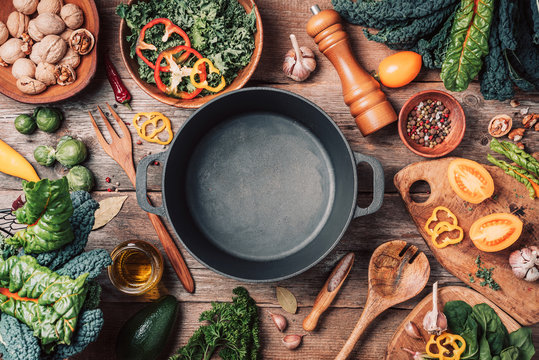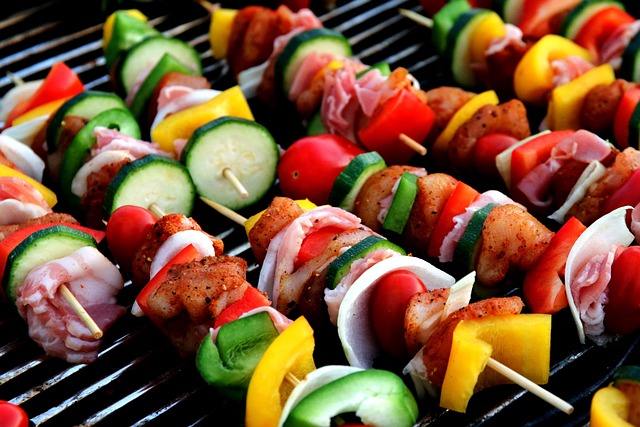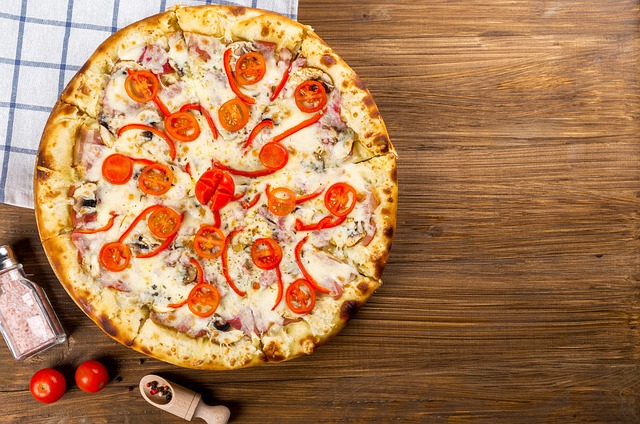
Discover the colorful tapestry of flavors and traditions that make up the 10 most loved ethnic cuisines.
From the rich pasta dishes of Italy to the delicate pastries of France, and the vibrant spices of Mexico, this article takes you on a culinary journey around the world.
Explore the diverse cuisines of China, India, the Mediterranean, Japan, the Middle East, and Africa, and indulge in the mouthwatering dishes that have captured the hearts and palates of food enthusiasts worldwide.
Italian Cooking
Italian Cooking is renowned for its rich flavors and diverse regional specialties. The Italian regional cuisine offers a wide array of dishes that showcase the country's culinary traditions.
One of the most popular aspects of Italian cooking is the variety of pasta dishes. From the hearty and comforting spaghetti Bolognese to the delicate and flavorful seafood linguine, Italian pasta dishes never fail to impress. Each region in Italy has its own unique pasta specialties.
In the north, you'll find creamy risottos and stuffed pasta like ravioli, while the south is known for its spicy tomato-based sauces and long, thin pasta like spaghetti. Regardless of the region, Italian pasta dishes are always made with fresh ingredients and cooked to perfection, ensuring a safe and satisfying dining experience.
French Cooking
French cooking is renowned for its exquisite flavors and meticulous attention to detail. Rooted in the traditions of French culinary techniques, this cuisine has left an indelible mark on the world of gastronomy.

From classic dishes like Coq au Vin and Beef Bourguignon to delicate pastries such as Croissants and Crème Brûlée, French cuisine offers a rich and diverse culinary experience.
French culinary techniques, such as sautéing, braising, and flambéing, are known for their precision and ability to enhance flavors. These techniques, coupled with the use of fresh and high-quality ingredients, result in dishes that are both visually appealing and delectable.
With its emphasis on balance and harmony, French cooking is a testament to the artistry and finesse of the culinary world.
Mexican Cooking
Continuing the exploration into ethnic cuisines, the next subtopic focuses on the vibrant and spice-infused world of Mexican cooking. Mexican cuisine is known for its bold flavors, fresh ingredients, and diverse culinary traditions. Here are four key aspects that make Mexican cooking so enticing:
- Traditional recipes: Mexican cuisine is deeply rooted in ancient traditions and cultural influences. From savory tacos and enchiladas to flavorful salsas and guacamole, traditional recipes showcase the authentic flavors of Mexico.
- Modern twists: While traditional recipes form the foundation of Mexican cooking, modern twists have also emerged to cater to evolving tastes. Chefs are experimenting with fusion dishes, incorporating international ingredients, and creating innovative flavor combinations to give Mexican cuisine a contemporary touch.
- Spice and heat: Mexican cooking is famous for its generous use of spices and chili peppers. From mild to fiery, these ingredients add depth and complexity to dishes, creating a delightful explosion of flavors.
- Fresh and wholesome: Mexican cuisine emphasizes the use of fresh, locally sourced ingredients. From juicy tomatoes and vibrant avocados to aromatic herbs and succulent meats, the focus on freshness ensures a wholesome and satisfying dining experience.
Whether you prefer traditional recipes or enjoy exploring modern twists, Mexican cooking offers a tantalizing journey for your taste buds.
Chinese Cooking
Chinese cuisine is renowned for its diverse flavors and rich culinary traditions. Chinese cooking incorporates a wide variety of ingredients, techniques, and flavors, making it a popular choice for food enthusiasts around the world.
From the bold and spicy flavors of Sichuan cuisine to the delicate and subtle flavors of Cantonese dishes, Chinese cooking offers something for everyone. Traditional Chinese dishes often emphasize the balance of flavors and textures, with a focus on fresh ingredients and meticulous preparation.

Stir-frying, steaming, and braising are common cooking methods used in Chinese cuisine. With a long history and a deep-rooted culture, Chinese cooking continues to evolve while staying true to its culinary traditions.
Whether it's enjoying a comforting bowl of hot and sour soup or indulging in a plate of Peking duck, Chinese cuisine offers a delightful journey for the taste buds.
Indian Cooking
Indian cuisine, known for its vibrant spices and diverse flavors, offers a culinary experience that captivates food enthusiasts worldwide. With a rich history and a wide range of regional variations, Indian cooking has something to offer for every palate.
Here are four enticing aspects of Indian cuisine:
- Indian Spices: Known for their bold and aromatic profiles, Indian spices like turmeric, cumin, coriander, and cardamom add depth and complexity to dishes. They not only enhance the flavor but also offer numerous health benefits.
- Popular Indian Dishes: From the iconic butter chicken and biryani to the tangy and spicy flavors of chaat and the comforting lentil-based dal, Indian cuisine boasts a plethora of delicious dishes that cater to various dietary preferences.
- Vegetarian Options: India is known for its rich vegetarian culinary tradition. With a wide array of vegetable-based curries, lentil dishes, and paneer creations, Indian cuisine offers a diverse range of options for those seeking meatless alternatives.
- Regional Diversity: Each region in India has its own unique culinary traditions and specialties. From the fiery curries of the south to the creamy and indulgent dishes of the north, exploring the regional diversity of Indian cooking is a delightful journey.
Indian cuisine, with its vibrant spices, diverse flavors, and a wide range of vegetarian options, guarantees a memorable dining experience. Whether you are a spice aficionado or a fan of hearty vegetarian dishes, Indian cooking has something to satisfy every palate.
Thai Cooking
Thai cuisine is known for its bold and vibrant flavors. One of the key elements that contribute to this is the use of spicy ingredients. From the fiery heat of chili peppers to the aromatic kick of ginger and lemongrass, Thai dishes are often packed with a punch.
Additionally, traditional Thai cooking techniques are employed to retain the freshness and texture of the ingredients. Stir-frying and steaming are commonly used to achieve this. These techniques not only preserve the flavors but also result in dishes that are visually appealing and delicious.

Spicy Ingredients in Thai Cuisine
Known for their bold and fiery flavors, Thai cuisine incorporates a variety of spicy ingredients that elevate dishes to new levels of culinary delight. Thai cuisine is renowned for its ability to balance sweet, sour, salty, and spicy flavors, creating a harmonious explosion of taste in every bite.
When it comes to spicy ingredients, Thai cooking doesn't hold back. Here are four spicy ingredients commonly found in Thai cuisine:
- Thai chilies: These small, potent chilies pack a punch and are used in a wide range of Thai dishes, from curries to stir-fries.
- Thai red curry paste: Made from a blend of red chilies, garlic, lemongrass, and other aromatic spices, this paste adds depth and heat to curries and soups.
- Galangal: This root, similar to ginger, has a citrusy and peppery flavor that adds a distinctive kick to Thai dishes.
- Bird's eye chili: These tiny, fiery chilies are often used to add a burst of heat to salads, sauces, and marinades.
Thai cuisine's use of spicy ingredients reflects the vibrant and bold flavors found in Thai street food culture. It's important to note that while Thai cuisine is known for its spiciness, the level of heat can be adjusted to suit individual preferences.
Traditional Thai Cooking Techniques
With its rich culinary heritage, Thai cooking showcases a range of traditional techniques that contribute to the unique and flavorful dishes of this vibrant cuisine.
Traditional Thai cooking techniques involve a careful balance of flavors, textures, and ingredients to create dishes that are both delicious and visually appealing.
One key aspect of Thai cooking is the use of fresh and aromatic herbs and spices, such as lemongrass, galangal, and kaffir lime leaves, which are often pounded together to create a paste or added to dishes for a burst of flavor.
Another technique commonly used in Thai cuisine is stir-frying, which involves quickly cooking ingredients over high heat to retain their natural flavors and textures.

Thai street food, known for its bold and vibrant flavors, is a great example of how these traditional cooking techniques are used to create delicious and authentic Thai dishes.
Mediterranean Cooking
Mediterranean cooking is renowned for its emphasis on a healthy diet and the use of popular ingredients.
The Mediterranean diet is known for its abundance of fresh fruits and vegetables, whole grains, lean proteins, and heart-healthy fats.
Olive oil, garlic, tomatoes, and herbs like basil and thyme are some of the key ingredients that give Mediterranean dishes their distinct flavors.
Healthy Mediterranean Diet
The Healthy Mediterranean Diet, a popular eating pattern in many cultures, emphasizes a variety of fresh ingredients and is associated with numerous health benefits. This wholesome way of eating is not only delicious but also focuses on nourishing the body with nutrient-dense foods. Here are four key reasons why the Mediterranean Diet is highly regarded for its health benefits:
- Heart Health: The Mediterranean Diet is rich in heart-healthy fats, such as olive oil and nuts, which can help lower cholesterol levels and reduce the risk of heart disease.
- Reduced Inflammation: The abundance of fruits, vegetables, whole grains, and legumes in this diet provides a wide range of antioxidants and anti-inflammatory compounds that can help combat chronic inflammation.
- Weight Management: The Mediterranean Diet emphasizes portion control and encourages regular physical activity, making it an effective approach for maintaining a healthy weight.
- Brain Health: Research suggests that the Mediterranean Diet, with its emphasis on fish, nuts, and olive oil, may reduce the risk of cognitive decline and improve brain function.
Popular Mediterranean Ingredients
One essential component of Mediterranean cooking is the use of flavorful herbs and spices. Popular Mediterranean spices that are commonly used in traditional Mediterranean dishes include oregano, thyme, rosemary, basil, and parsley. These spices add depth and complexity to the dishes, enhancing the overall flavor profile.
Oregano is particularly popular in Mediterranean cuisine, adding a distinct earthy and aromatic note. Thyme and rosemary bring a savory and woody flavor, while basil and parsley contribute freshness and brightness. These spices not only provide a burst of flavor but also offer various health benefits. They are rich in antioxidants and have anti-inflammatory properties, making them a great addition to a healthy diet.

Incorporating these popular Mediterranean spices into your cooking can help you recreate the authentic flavors of the Mediterranean region and elevate your dishes to a whole new level.
Japanese Cooking
Japanese cooking is renowned for its precision, balance, and emphasis on fresh ingredients. Rooted in centuries-old culinary traditions, Japanese cuisine has evolved into a harmonious blend of flavors, textures, and presentation. From delicate sushi rolls to comforting bowls of ramen, Japanese dishes offer a unique and satisfying dining experience.
Here are four elements that make Japanese cooking truly exceptional:
- Umami: Japanese cuisine is known for its rich and savory flavors, thanks to the generous use of ingredients like miso, soy sauce, and dashi.
- Seasonal ingredients: Japanese chefs prioritize using fresh, seasonal produce to ensure the highest quality and taste in their dishes.
- Precision and technique: Japanese culinary traditions emphasize the importance of precise cooking methods, such as knife skills and temperature control, to create perfectly executed dishes.
- Unique ingredients: From seaweed and fermented soybeans to delicate fish roe and wasabi, Japanese cuisine showcases a wide array of unique ingredients that add depth and complexity to their dishes.
With its focus on freshness, balance, and meticulous preparation, Japanese cooking offers a delightful culinary experience that caters to both the adventurous and safety-conscious eaters.
Middle Eastern Cooking
With its vibrant flavors and diverse culinary traditions, Middle Eastern cooking offers a rich and enticing dining experience. Middle Eastern cuisine is known for its use of aromatic spices that add depth and complexity to dishes. Some popular Middle Eastern spices include cumin, coriander, turmeric, cinnamon, and sumac.
These spices are used in various traditional Middle Eastern dishes, such as falafel, hummus, shawarma, and kebabs. These dishes are often made with fresh ingredients like herbs, vegetables, and legumes, making them not only delicious but also nutritious.
Middle Eastern cooking also incorporates a variety of cooking methods, including grilling, braising, and stewing, which further enhance the flavors of the dishes. With its bold flavors and wholesome ingredients, Middle Eastern cuisine is a delightful exploration for food enthusiasts.

African Cooking
African cooking is a rich and vibrant culinary tradition that encompasses a diverse range of flavors and spices.
From the aromatic tagines of North Africa to the fiery jollof rice of West Africa, African cuisine is known for its bold and unique taste profiles.
With ingredients like yam, plantain, and okra, African cooking offers a truly unforgettable culinary experience.
African Culinary Traditions
The rich tapestry of African culinary traditions encompasses a diverse range of flavors, techniques, and ingredients. From North Africa to West Africa, East Africa to Southern Africa, each region boasts its own unique culinary heritage.
Here are four fascinating aspects of African cooking that will surely tantalize your taste buds:
- Bold and Spicy Flavors: African cuisine is known for its vibrant and fiery flavors. From the piri piri sauce of Mozambique to the berbere spice blend of Ethiopia, African dishes are often packed with intense heat and complexity.
- Unique Ingredients: African cooking relies on a wide array of ingredients, many of which are indigenous to the continent. These include ingredients like yams, plantains, cassava, okra, and various types of grains like millet and sorghum.
- Rich Stews and Soups: Stews and soups are a hallmark of African cuisine. Whether it's the hearty West African peanut stew or the fragrant Moroccan tagine, these dishes are often slow-cooked to perfection, resulting in rich, flavorful meals.
- Street Food Delights: African street food is a culinary adventure in itself. From the popular South African bunny chow to the savory Nigerian suya, the streets of Africa are filled with delicious snacks and bites that are sure to please any food lover.
With its unique ingredients and flavors, African culinary traditions offer a truly unforgettable dining experience.
Diverse Flavors and Spices
One cannot deny the diverse array of flavors and spices found in African cooking. African cuisine is known for its vibrant and bold flavors that are a result of the continent's rich cultural heritage and the use of a wide variety of spices and herbs.

From the fiery heat of West African cuisine to the complex flavors of North African dishes, African cooking offers a unique culinary experience. Each region in Africa has its own distinct flavor profile and traditional dishes, allowing for an exploration of unique regional dishes.
Additionally, African cuisine has been influenced by fusion cuisine trends, incorporating flavors and techniques from other cultures to create exciting and innovative dishes. Whether you are a fan of spicy, savory, or sweet flavors, African cooking has something to offer for everyone.
Frequently Asked Questions
What Are Some Common Cooking Techniques Used in Italian Cuisine?
Traditional Italian cooking techniques are known for their simplicity and emphasis on fresh, high-quality ingredients. They include methods such as braising, roasting, and grilling, as well as techniques like pasta making and preserving foods through canning and pickling.
How Does French Cooking Differ From Other European Cuisines?
French cooking differs from other European cuisines through its unique culinary traditions and techniques. When comparing it to Spanish cuisine, French cooking showcases distinct flavors and methods. The influence of French cooking on modern gastronomy cannot be underestimated.
What Are Some Popular Spices and Seasonings Used in Mexican Cooking?
Popular Mexican spices and seasonings are essential in creating the vibrant and bold flavors found in traditional Mexican cuisine. These include chili powder, cumin, oregano, cilantro, and garlic, which add depth and complexity to dishes.
What Are the Key Ingredients and Flavor Profiles in Chinese Cuisine?
Key ingredients in Chinese cuisine include soy sauce, ginger, garlic, and rice vinegar, which contribute to the unique flavor profiles. Chinese cuisine is characterized by a balance of flavors, such as sweet and sour, spicy and savory, creating a harmonious culinary experience.
Are There Any Regional Variations in Indian Cooking, and if So, What Are They?
Regional variations in Indian cooking are abundant, with each region boasting its own unique flavors and techniques. Traditional methods passed down through generations have also been adapted to modern tastes, resulting in a diverse and vibrant culinary landscape.

 Family Craft ProjectsHome ImprovementCooking and BakingReuse and RecycleDIY GiftsEco-Friendly ProjectsDIY Home SolutionsSeasonal ActivitiesFun and GamesLearn TogetherPrivacy PolicyTerms And Conditions
Family Craft ProjectsHome ImprovementCooking and BakingReuse and RecycleDIY GiftsEco-Friendly ProjectsDIY Home SolutionsSeasonal ActivitiesFun and GamesLearn TogetherPrivacy PolicyTerms And Conditions

 Family Craft ProjectsHome ImprovementCooking and BakingReuse and RecycleDIY GiftsEco-Friendly ProjectsDIY Home SolutionsSeasonal ActivitiesFun and GamesLearn TogetherPrivacy PolicyTerms And Conditions
Family Craft ProjectsHome ImprovementCooking and BakingReuse and RecycleDIY GiftsEco-Friendly ProjectsDIY Home SolutionsSeasonal ActivitiesFun and GamesLearn TogetherPrivacy PolicyTerms And Conditions
